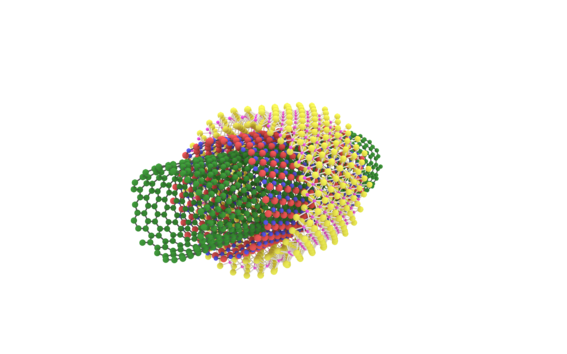Aalto carbon nanotubes used in new material revolution

Aalto University Professor Esko I. Kauppinen has helped a team in Japan with their groundbreaking work in growing completely new types of materials. The researchers, led by a team at the University of Tokyo, have grown nanotubes that they can control the chemical composition of. This is important for materials scientists because it can allow them to make any electrical material they want, and combine it with nanotubes’ ability to be extremely strong and extremely light at the same time.
The new nanotubes the researchers have grown are structures are called one-dimensional van Der Waals Heterostructures, or 1DHS for short. They are made of layers of nanotubes, with a carbon nanotube in the centre, a boron nitride nanotube on top of that, and a molybdenum disulphide tube around the outside. These three materials were chosen because they all conduct electricity differently, and combining them into a 1DHS produces a strong, light material with unique electrical and chemical properties.
The team built their new nanotubes in the same way that you can build a house using Lego, they started with a base layer and added new materials on top in a specific order to build the structure they wanted. Professor Kauppinen’s contribution to the work was by providing the single wall carbon nanotubes that were used as the base layer to build the new materials on top of. Professor Kauppinen’s team have been perfecting new techniques for producing carbon nanotubes in large quantities and with high purity, and have published their own papers on this recently as well.
“We’ve developed a unique method to produce a network of very high quality and clean single walled carbon nanotubes,” said Professor Kauppinen. “Our network includes individual, free-standing nanotubes, which are useful for our collaborators in Japan because it helps them easily deposit new layers to grown their novel structures.”
The layering of carbon, boron nitride and molybdenum disulphide allowed them to build 1DHS where each tube where each layer had different electrical properties layered on top of each other. They have published a paper describing their new method this week in the journal Science, and they are now going to develop applications for their new materials. The material could be ideal for making smaller and faster electronic transistors than the current ones made from silicon, and it has novel optical properties, too. “As with all new classes of materials though, the most exciting applications are the ones that we don’t even know yet.” Said Professor Kauppinen.
The paper was produced by a collaboration between researchers at the University of Tokyo, MIT, Peking University, AIST, NIMS, Tokyo Metropolitan University, University of Tsukuba, IIT Madras, Canatu Oy and Aalto University.
Contact:
Read more news

Start the year with new insights – apply for FITech's spring courses!
Deepen your knowledge with courses from Finnish universities of technology, designed to meet the demands of the working life and help deepen your expertise for free.Growing Materials, Growing Ideas: Inside the BioMaker Studio
At Aalto University’s BioMaker Studio, initiated by Ena Naito, students and researchers experiment with living materials, from algae to mycelium, creating an open, interdisciplinary space where design, biology, and collaboration grow together.
Your voice gives away valuable personal information, so how do you keep that data safe?
With speech technologies becoming increasingly common, researchers want to make sure we don’t give away more information than we mean to.







